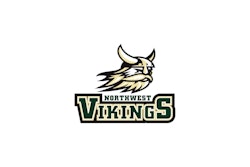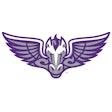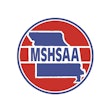
The onset of the COVID-19 pandemic changed many facets of the way the fitness industry does business. It prompted new cleaning protocols, expanded virtual and outdoor programming opportunities, revamped reservation systems and much more.
While some great innovation happened, it came at a cost. Many operators had to find creative ways to reduce expenses, as shutdowns, limited-capacity restrictions and overall consumer hesitancy led to lower overall membership numbers and a decrease in ancillary revenue. In short, expenses went up and income went down, forcing facilities to uncover ways to reduce operating expenses as a means of survival.
One common way to reduce expenses has been to streamline staff. This equates to fewer staff members doing the same amount of work. “Hey there, team member. I want you to take on more responsibility and do more work for the same amount of pay.” Not exactly an easy sales pitch. Owners, operators and managers were faced with a challenge — achieve a level of performance exceeding expectations with less compensation.
Based on personal experience, as well as the experiences of other industry leaders and operators, I have identified five common strategies to help you face the challenge of successfully leading your streamlined staff.
1. Reinforce purpose
People generally perform better when they believe what they do makes a difference. Is there any industry that makes a bigger difference in peoples’ lives than ours?
To reinforce purpose, go through “The Five Levels of Why.” Start with the position of welcome desk attendant, and ask which aspects of this role make it so important? One duty is to welcome members. Why is that important? It makes members feel good about attending. What makes that important? Members will keep coming back. Why is that important? If members keep coming back, they get healthier, which makes them happier. You get my point. Showing team members the importance of their duties reveals a deeper purpose. If people believe in what they do, they will do it and do it well.
2. Share appropriate data
This expands on the first tip. While having a personal sense of meaning or purpose is key, backing that up with tangible data cements it.
Consider which key performance indicators can be shared to add another layer of meaning for staff. It may be an increase in member attendance, a climbing Net Promoter Score or positive feedback from members. Any data works as long as it demonstrates that the team’s performance is making an impact.
Telling the welcome desk team, “You are doing such a great job making members feel welcome that we increased our attendance by 10 percent last month!” makes their efforts and their impact more concrete and measurable.
3. Implement new technology
While reinforcing purpose and supporting it with data is powerful, it is also important to make sure to look at ways to make daily operations easier and more efficient for team members. What can be done more effectively using technology? Which tasks can be automated?
As a simple example, if your welcome desk has new duties such as extra cleaning tasks, try using a system to automate check-ins. This frees up employees’ time to perform newly expanded duties. Not only will this be appreciated, but it will also improve the member journey by making the check-in experience more seamless.
The pandemic spawned a lot of innovation. Take advantage of it.
4. Employ consistent and enhanced training
With more to do, your team needs more training to help them do a better job. When an employee does a good job, members have a better experience, and employees feel good about themselves.
Some training should be cross-departmental. When a welcome desk member knows how to perform other tasks, transition and execution become more seamless. As an example, your welcome desk team member, if trained on the basics, could assist your childcare department during busy periods. Cross-training creates synergy and strengthens the bond between departments.
In addition, consistent and enhanced training helps team members grow professionally, which engages them more deeply.
5. Engage through gratitude
Raises, bonuses and the ability to promote are huge factors in increasing team member engagement. In the current era of working with a streamlined staff, many of these are likely not possible. Thus, opportunities to express gratitude in alternative ways become critical.
The Gallup Q12 Employee Engagement Survey is the leading survey predicting employee engagement. Many of the questions on the survey revolve around team members feeling appreciated. Feeling appreciated leads to high levels of engagement.
To keep a downsized team with increased responsibility engaged and performing at a high level, use gratitude. Make sure gratitude is expressed in a frequent, specific and timely manner. One benefit of expressing gratitude is that it doesn’t cost anything other than being mindful about showing appreciation.
Following these five tips will help you overcome many of the challenges that accompany asking fewer team members to do more. Not only will these tips help you lead a streamlined staff, they represent best practices that can be applied under any staffing circumstance — the old normal, the pandemic, the new normal and beyond.





































